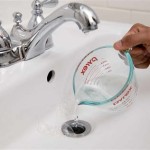How to Replace Grout in a Bathroom
Over time, grout can become stained, discolored, or even cracked and chipped. This can make a bathroom look dingy and outdated. Replacing grout is a relatively simple DIY project that can dramatically improve the appearance of your bathroom. This article will provide a detailed guide on how to replace grout, covering everything from choosing the right materials to the cleaning process.
Choosing the Right Grout
Before you begin, it's important to choose the right type of grout for your bathroom. There are two main types of grout: sanded and unsanded. Sanded grout is best for wider grout lines (more than 1/8 inch) as the sand helps to fill the gaps and prevent cracking. Unsanded grout is better for narrower grout lines (less than 1/8 inch) because the sand can create a rough texture. Consider the following factors while choosing the right grout for your project:
- Grout color: Choose a color that complements the tiles and the overall bathroom design.
- Grout formula: Choose a grout that is specifically designed for bathrooms, as it will be more resistant to moisture and mold growth.
- Grout strength: For high-traffic areas, choose a grout with a higher strength rating.
Preparing the Grout for Removal
Before removing the old grout, you need to prepare the area. This involves cleaning the tiles and grout, protecting the surrounding surfaces, and removing any loose or damaged grout. Here's a step-by-step guide:
- Clean the tiles and grout. Use a grout cleaner or a mixture of baking soda and water to remove dirt and grime. Allow the cleaner to sit for the recommended time before scrubbing with a stiff-bristled brush. Rinse the tiles and grout thoroughly.
- Protect the surrounding surfaces. Use painter's tape to cover any areas that you don't want to get grout on. Cover any nearby fixtures with plastic sheeting to prevent them from getting dirty.
- Remove any loose or damaged grout. Use a utility knife or grout saw to remove any loose or damaged grout. For stubborn grout, you can use a grout removal tool or a rotary tool with a diamond blade.
Removing the Old Grout
Once the grout is prepared, you can begin the removal process. It is important to use caution when removing the old grout to avoid damaging the tiles. Here's how to remove it:
- Use a grout removal tool. These tools are specifically designed to remove old grout. You can find them at most hardware stores. Insert the tool into the grout line and use a gentle rocking motion to break up the grout.
- Use a utility knife. If you don't have a grout removal tool, you can use a utility knife. Carefully insert the blade into the grout line and gently pry the grout out.
- Use a rotary tool. For stubborn grout, you can use a rotary tool with a diamond blade. Be sure to use a light touch and avoid putting too much pressure on the blade to prevent damaging the tiles.
Cleaning the Grout Lines
After removing the old grout, it is crucial to prepare the grout lines for the new grout. This involves cleaning the lines and making sure that they are free of residue and debris. Here's how to do it:
- Vacuum the grout lines. Use a vacuum cleaner with a crevice attachment to remove any dust and debris.
- Wipe down the grout lines. Use a damp cloth to wipe down the grout lines and remove any remaining residue.
- Let the grout lines dry completely. This will ensure that the new grout adheres properly.
Applying the New Grout
Once the grout lines are clean and dry, you can start applying the new grout. Here's a step-by-step guide:
- Mix the grout according to the manufacturer's instructions. Use a grout float to spread the grout into the grout lines. Work the grout into the lines with a firm, diagonal motion. Make sure to fill the grout lines completely.
- Remove excess grout. Use a damp sponge to remove any excess grout from the tiles. Wipe the tiles in a diagonal direction to prevent smearing.
- Let the grout dry. Allow the grout to dry for the time recommended by the manufacturer. This may take several hours or even overnight. Clean any grout haze from the tiles.
Sealing the Grout
While optional, sealing the grout is important to prevent staining and make it easier to clean. Once the grout is fully dry, apply a grout sealer. Apply a thin layer of sealer following the manufacturer's instructions. Allow the sealer to dry completely before using the bathroom.
Replacing grout in a bathroom can be a time-consuming process, but the results are well worth it. By following these steps, you can successfully replace grout in your bathroom and enjoy a fresh, clean look for years to come.

Can I Put New Grout Over My Old The Medic

How To Prevent Expensive Bathroom Shower Tile And Grout Repair Promaster Home Handyman

Quick Fix Repair Ed Bathroom Grout

How To Remove And Replace Grout In A Shower Diy For Beginners

Is Ed Grout A Problem Repair Easy The Medic

How To Regrout Bathroom Tile In 5 Easy Steps True Value

How To Repair Ed Tile Grout An Easy Guide The Lived In Look

How To Fix Holes In Shower Grout The Experts

How To Repair Ed Tile Grout An Easy Guide The Lived In Look

How Do I Know If Need To Regrout My Shower The Grout Medic







